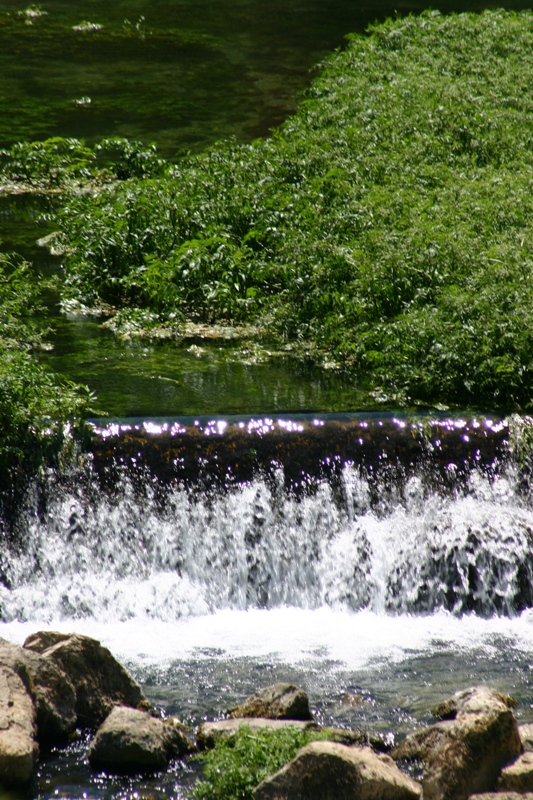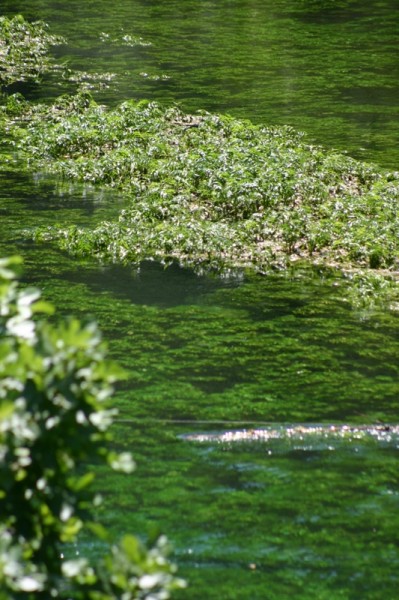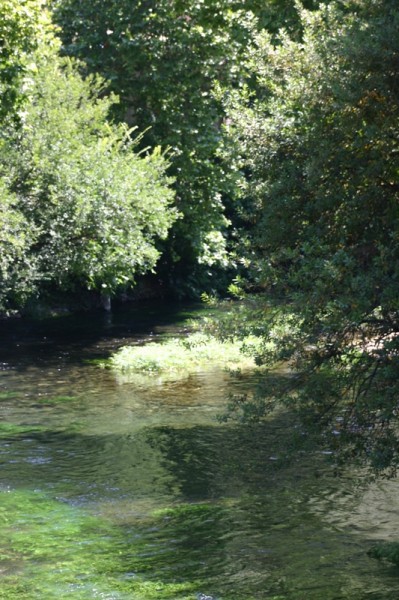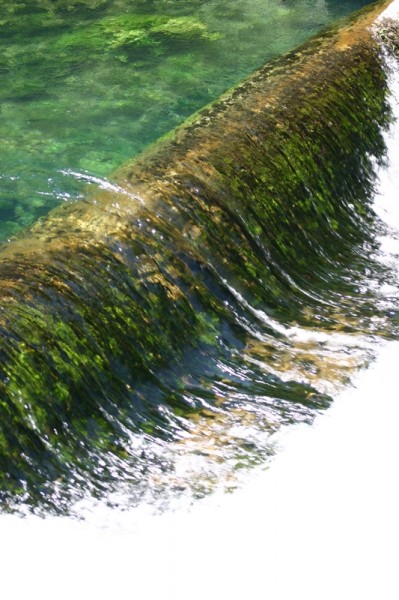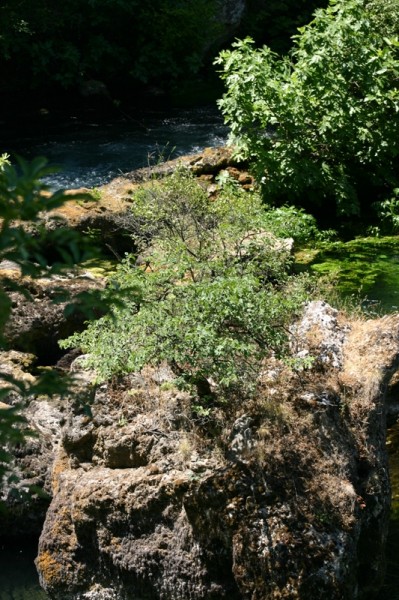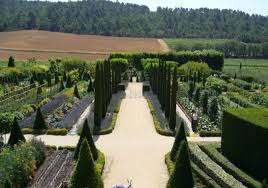FONTAINE DE VAUCLUSE, a source of inspiration between Avignon and the Luberon
secteur des Sorgues #Economie, #Histoire, #Patrimoine, #Sport et loisirs, #Tourisme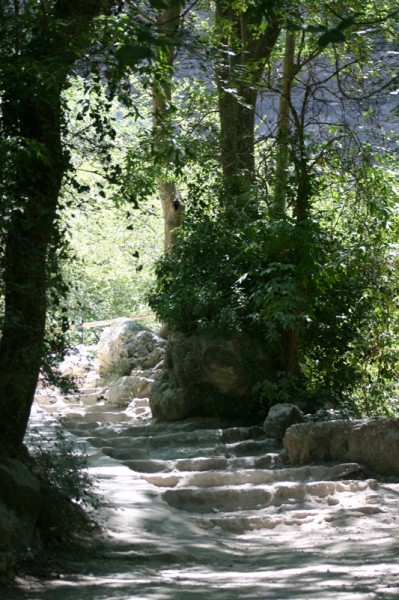
The village of Fontaine de Vaucluse is one of the most visited in Provence and has inspired many artists, including Francesco Petrarch, Frédéric Mistral and René Char. The town gave its name to the Department of "Vaucluse," pulling its etymology from its geographical curiosity, the "Vallis Clausa"
At the bottom of this valley, a resurgence (the "fountain") at the foot of a limestone cliff 230 to 240 meters high provides an annual water flow of 630 million cubic meters making it the largest resurgence in France and the fifth worldwide. The annual flow is not constant ... rather quiet in summer, the flow of water is spectacular during the flood period (in winter and spring) with a rate that can reach 90 cubic meters per second. This flow can provide a throughput of water sufficient to constantly irrigate the town of Isle sur la Sorgue. The resurgence of Fontaine de Vaucluse is actually the most important output of a natural "reservoir" (the galleries and chambers of the mountains of Vaucluse and the range of the Barronies which stretch from the Mont Ventoux to the Lure mountain collecting rainwater and snowmelt), covering a total area of 1,100 square kilometers.
The first exploration of the abyss began in 1878 and the lowest point, 308 meters below the surface of the cave, was reached in 1985.
The waters of the Sorgue, the colour of emerald green, stay at approximately the same temperature throughout the year, to the delight of water sports enthusiasts such as kayakers.
This water has played a vital role in the economy of the area. Utilising the force of the water, paper mills appeared in the 15th century. The jewel of the local industry, stationery assured long-term prosperity for the area before being overtaken by modern day trends and replaced locally by tourism and handicrafts.
Tourists, who come essentially to see the fountain, enjoy passing the time in this pleasant village walking the cobbled streets, being carried away by the freshness and sweetness of the life around them.
In the village is a church built in the XIth century and rebuilt several times commencing in the XIIth century, which houses the tomb of Saint Veran. There is a viaduct, several dams and bridges, ruins of the castle of the XIIIth and XIVth century Bishops of Cavaillon, old paper mills, a column erected in 1804 to celebrate the 500th anniversary of the birth of Petrarch, several "bories" ... as well as several museums such as the "Library-Museum Francis Petrarch", the "Museum of the Call of Freedom '(1939-1945), the "Historical Museum of the Justice and Punishment" (which is more familiarly called the "Torture Museum"), "the Museum of the Santons", the "Underground World of Norbert Casteret" and "Vallis Clausa, traditional stationery "...
4 kms to the west is Saumane de Vaucluse and Isle sur la Sorgue is about 7km. To the east, Lagnes is 3km and 10km away is Cabrières d'Avignon. The entrance to the valley north of the Luberon is 10 minutes away, with its famous hilltop villages (Gordes, Menerbes, Roussillon, Oppède, Lacoste, etc..), and Avignon, with its festival, Palace of the Popes, Pont d'Avignon, TGV, etc. is 40 minutes.

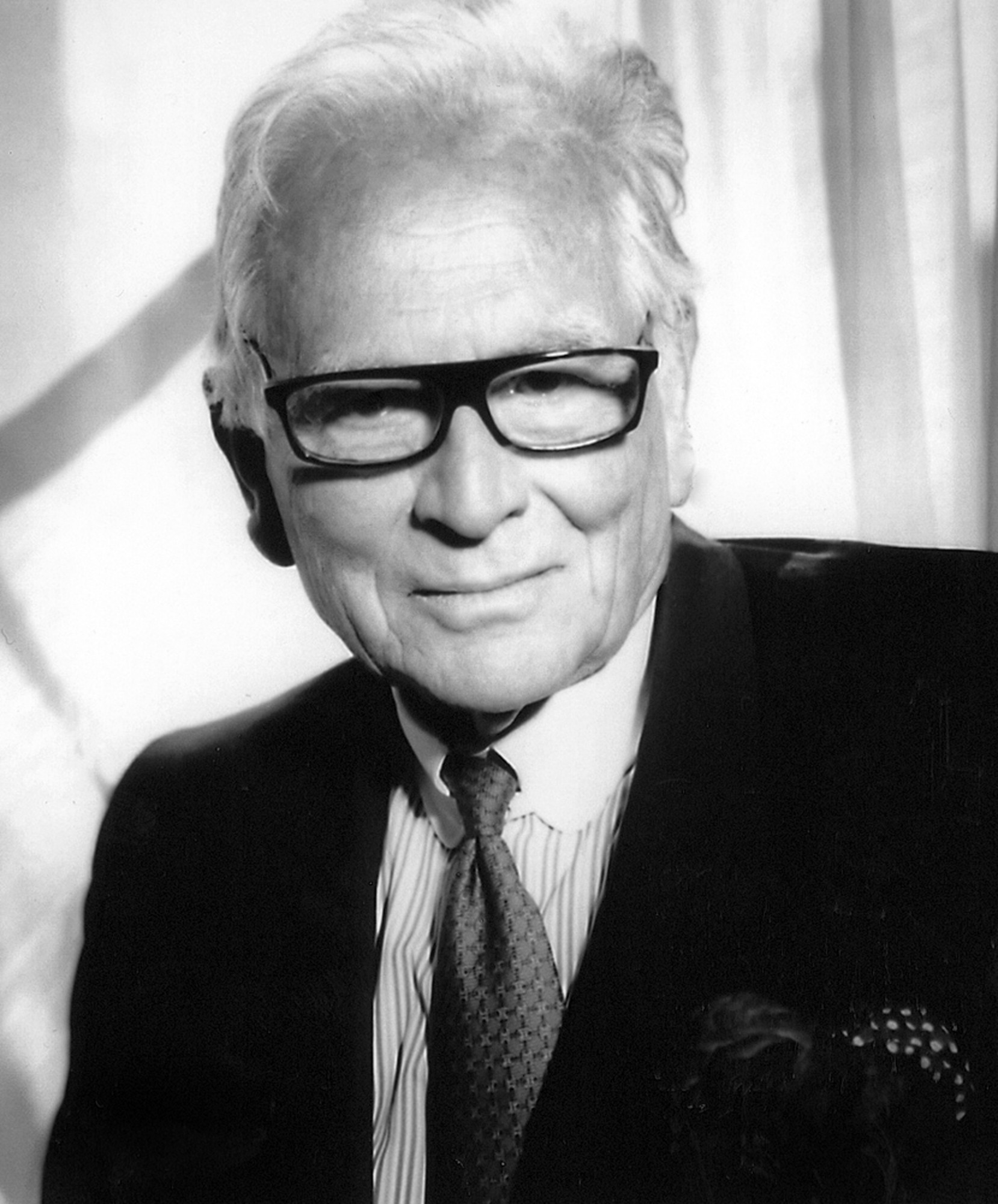
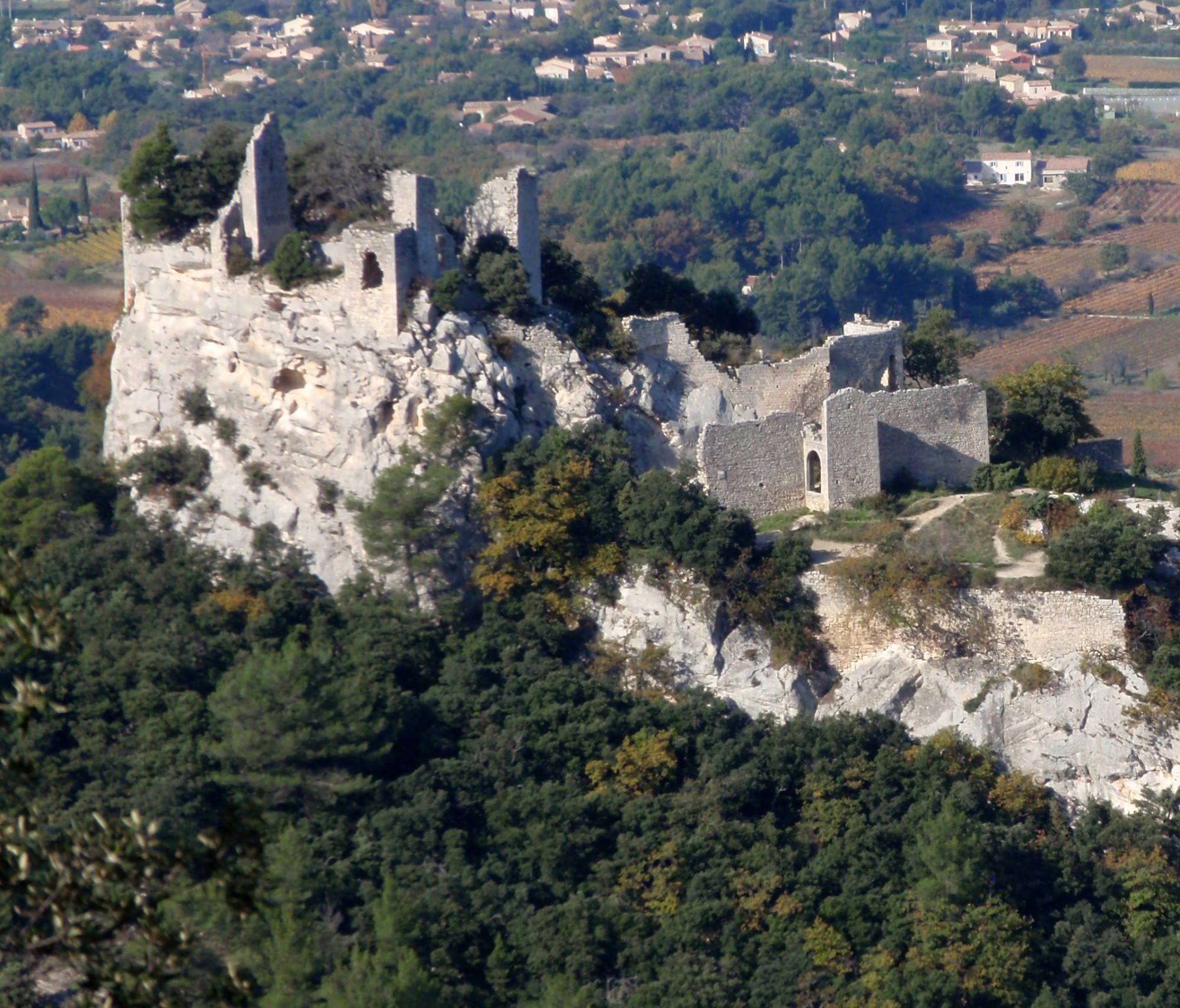
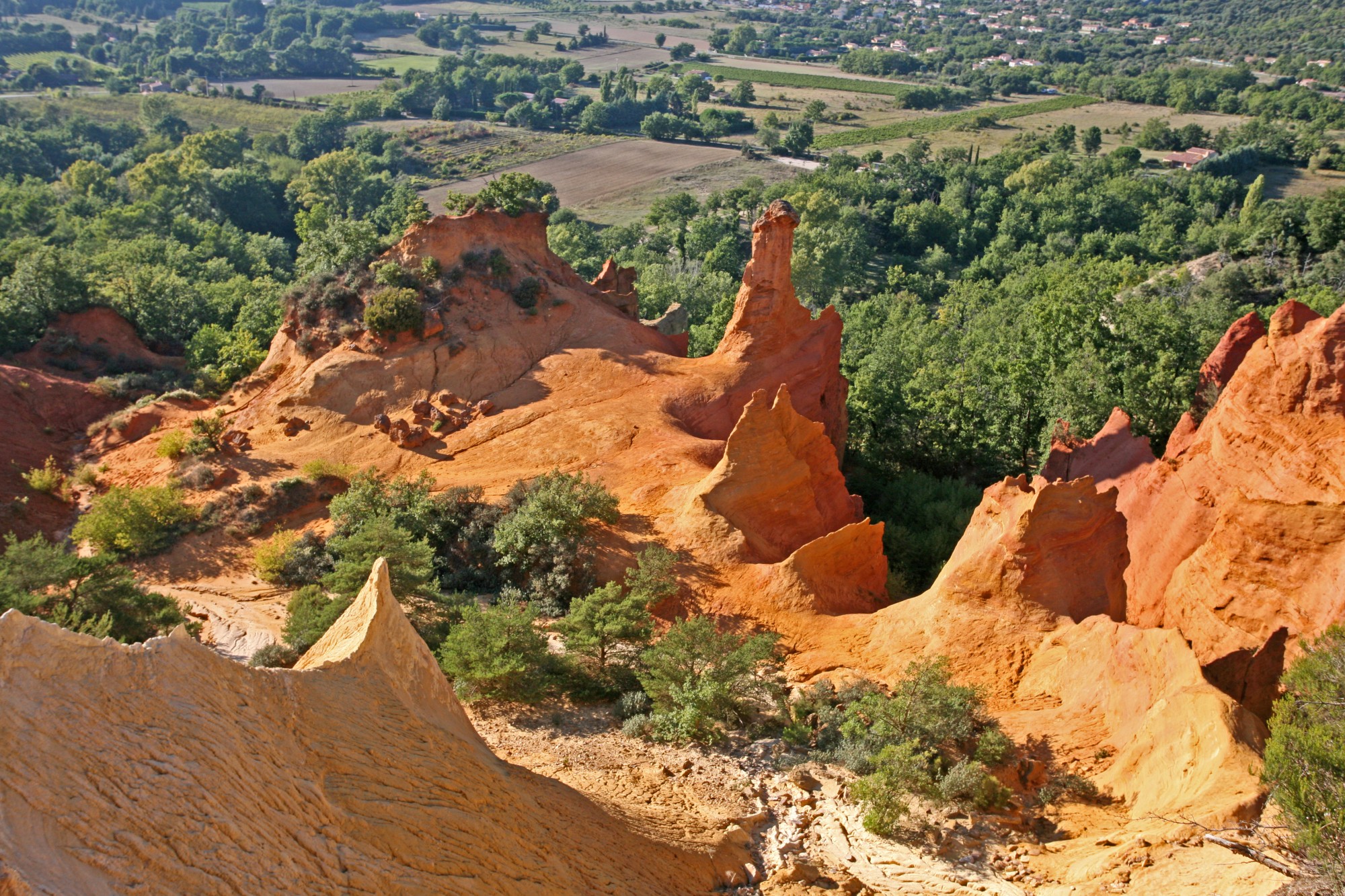
- Rosier Real Estate
- Place du Château
84220 GORDES
France

